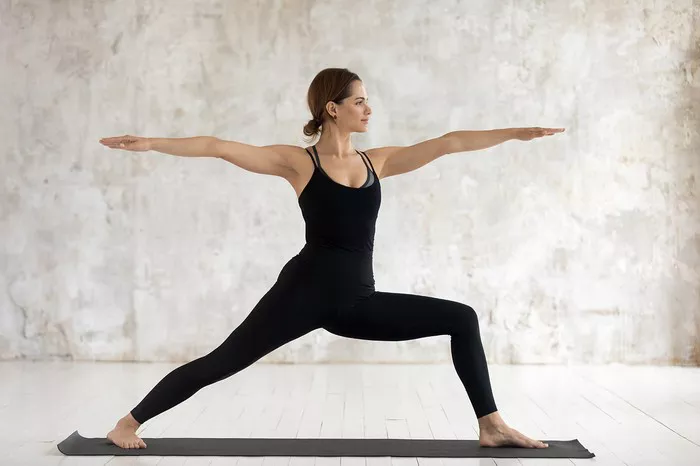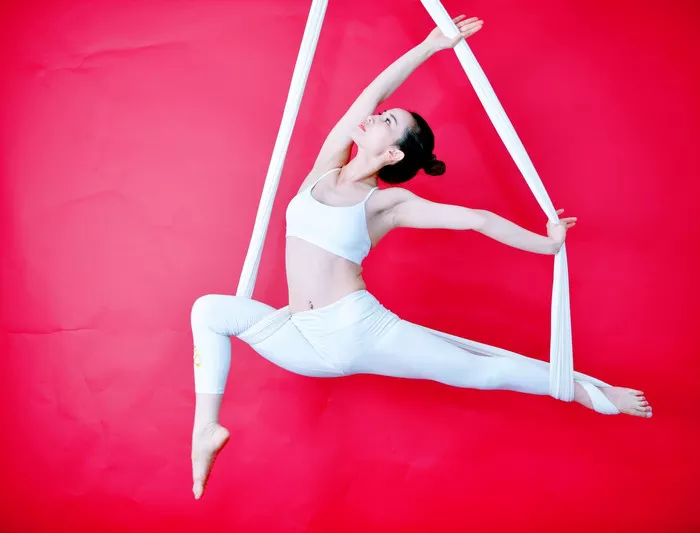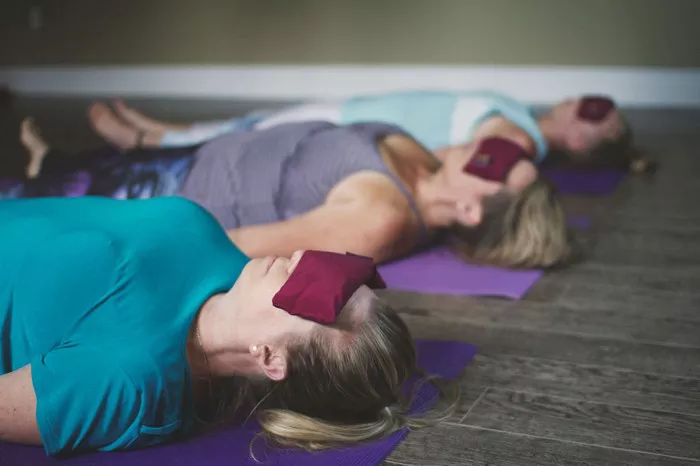The throat chakra, known as Vishuddha in Sanskrit, is the energy center responsible for communication, self-expression, and authenticity. Located at the throat region, it governs our ability to articulate thoughts and feelings clearly and effectively. When the throat chakra is balanced and open, we experience confidence in expressing ourselves, speaking our truth, and listening attentively.
Yoga offers a profound way to balance and activate the throat chakra through specific postures (asanas), breathwork (pranayama), and meditation techniques. By practicing yoga poses that stimulate the throat region and encourage mindful awareness, we can enhance our communication skills, resolve inner conflicts, and align with our true voice.
Understanding the Throat Chakra
Before delving into specific yoga poses, it’s essential to understand the characteristics and significance of the throat chakra:
Location: Situated at the throat, this chakra is associated with the thyroid gland and governs the neck, jaw, mouth, and vocal cords.
Color: Vishuddha is often depicted as blue, symbolizing clarity, truth, and expansiveness.
Element: Ether (or Akasha), representing space and the medium through which sound travels.
Function: The throat chakra facilitates communication, self-expression, creativity, and the ability to listen openly.
When the throat chakra is imbalanced—whether overactive or underactive—it can manifest as issues such as difficulty expressing oneself, fear of speaking, throat infections, or even thyroid problems. Through yoga, we can bring harmony to this energy center, fostering a sense of authenticity and openness in our communication.
Yoga Poses for Balancing the Throat Chakra
The following yoga poses are specifically chosen to activate and harmonize the throat chakra. Each pose is accompanied by instructions on alignment, breathing techniques, and visualizations to deepen your practice:
1. Shoulder Stand (Sarvangasana)
Shoulder stand is a powerful inversion that stimulates the throat chakra while improving circulation to the thyroid gland. Here’s how to practice it:
- Lie on your back and lift your legs overhead, supporting your lower back with your hands.
- Keep your elbows close together and your body in a straight line.
- Breathe deeply and visualize a bright blue light at your throat center, expanding with each breath.
2. Fish Pose (Matsyasana)
Fish pose opens the throat and chest, promoting deep breathing and activating the throat chakra. Follow these steps:
- Lie on your back with your legs extended and your arms resting alongside your body.
- Press your forearms and elbows into the floor as you arch your chest upward.
- Lift your heart toward the sky and breathe into your throat, imagining a clear, open space for communication.
3. Plow Pose (Halasana)
Halasana stretches the neck and stimulates the throat chakra, improving circulation to the thyroid gland and calming the mind. Practice it as follows:
- From shoulder stand, lower your legs behind your head until your toes touch the ground.
- Support your back with your hands or interlace your fingers on the floor.
- Breathe deeply into your throat and visualize blue light expanding with each breath.
4. Camel Pose (Ustrasana)
Camel pose opens the heart and throat, encouraging vulnerability and authentic expression. Here’s how to do it:
- Kneel on the floor with your knees hip-width apart and toes tucked under.
- Place your hands on your lower back and gently arch backward, supporting your weight with your hands.
- Lift your chest toward the ceiling and breathe deeply into your throat chakra, releasing tension with each exhale.
5. Bridge Pose (Setu Bandhasana)
Bridge pose strengthens the neck and opens the throat, promoting clarity and communication. Practice it as follows:
- Lie on your back with your knees bent and feet hip-width apart.
- Press your feet into the floor as you lift your hips toward the sky.
- Clasp your hands beneath your pelvis and roll your shoulders under, lifting your chest toward your chin.
- Breathe deeply into your throat, visualizing blue light expanding with each inhale.
6. Lion’s Breath (Simhasana)
Lion’s breath is a pranayama technique that releases tension in the face and throat, promoting clear communication. Here’s how to practice it:
- Kneel on the floor with your knees hip-width apart and toes pointed back.
- Place your hands on your thighs and take a deep inhale through your nose.
- Exhale forcefully through your mouth, sticking out your tongue and roaring like a lion.
- Repeat several times, feeling the throat open and release tension with each exhale.
7. Neck Stretches
Simple neck stretches can alleviate tension and promote circulation in the throat region. Practice these stretches mindfully:
- Sit or stand comfortably with your spine straight.
- Drop your right ear toward your right shoulder, holding for a few breaths.
- Repeat on the left side, feeling the stretch along the side of your neck.
- Continue with gentle forward and backward tilts, keeping the movements slow and controlled.
8. Fisherman’s Pose (Matsyasana)
Fisherman’s pose is a simple stretch that stretches the front of the neck and opens the throat. Here’s how to perform it:
- Stand tall with your feet hip-width apart and your hands clasped behind your back.
- Press your palms together and lift your chest towards the ceiling.
- Hold the position for 15-30 seconds while taking deep breaths.
9. Plow Pose (Halasana)
Plow pose stretches the spine, shoulders, and hamstrings, while stimulating the thyroid gland and calming the mind. Follow these steps:
- Lie on your back with your arms alongside your body, palms facing down.
- Inhale as you lift your legs over your head, bringing your toes to the floor behind you.
- Support your lower back with your hands, keeping your elbows close together.
- Hold the pose for several breaths, allowing your throat to relax and open.
Techniques to Enhance Throat Chakra Activation
Beyond yoga poses, incorporating specific techniques can further enhance the activation and balancing of the throat chakra:
See Also: Solar Plexus Chakra Yoga Poses
1. Chanting and Mantra Meditation
Chanting mantras such as “HAM” (pronounced as hum) can resonate with the throat chakra’s frequency, promoting healing and alignment. Sit comfortably in a cross-legged position or on a chair, close your eyes, and chant “HAM” aloud or silently. Feel the vibration in your throat and visualize a blue light expanding with each repetition.
2. Visualization
Visualize a bright blue light at your throat center during yoga practice or meditation. Imagine this light growing stronger and brighter with each inhale, clearing any blockages or tension in the throat area. Visualizations help focus energy and intention on balancing the throat chakra.
3. Breathwork (Pranayama)
Incorporate pranayama techniques that emphasize deep, steady breathing, such as Ujjayi pranayama (Victorious Breath). This technique involves breathing in and out through the nose, creating a gentle constriction at the back of the throat to produce a soft, oceanic sound. Ujjayi pranayama calms the mind, enhances concentration, and supports throat chakra activation.
4. Self-Expression Exercises
Engage in journaling, poetry writing, or any form of creative self-expression. These activities allow you to explore and articulate your thoughts, emotions, and desires authentically, fostering a healthy flow of energy through the throat chakra.
5. Mindfulness and Listening
Practice active listening in your interactions with others. Cultivate mindfulness by focusing on what others are saying without judgment or the urge to respond immediately. This practice promotes empathy, strengthens communication skills, and supports the balanced functioning of the throat chakra.
Conclusion
Balancing the throat chakra through yoga offers a powerful pathway to enhance communication, self-expression, and authenticity in your life. By practicing specific yoga poses, incorporating breathwork and mindfulness techniques, and nurturing creative self-expression, you can cultivate a harmonious flow of energy through the throat chakra. Embrace these practices with openness and dedication, allowing yourself to explore and strengthen your voice both on and off the mat. As you embark on this journey of self-discovery and empowerment, may you find clarity, confidence, and profound connection with your truest expression.
Related topics:






















